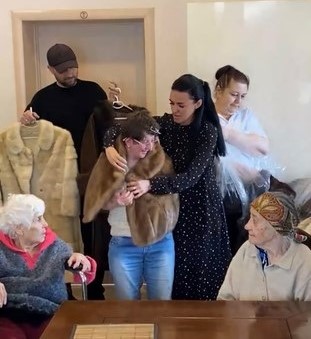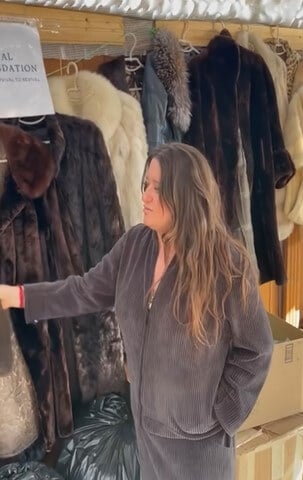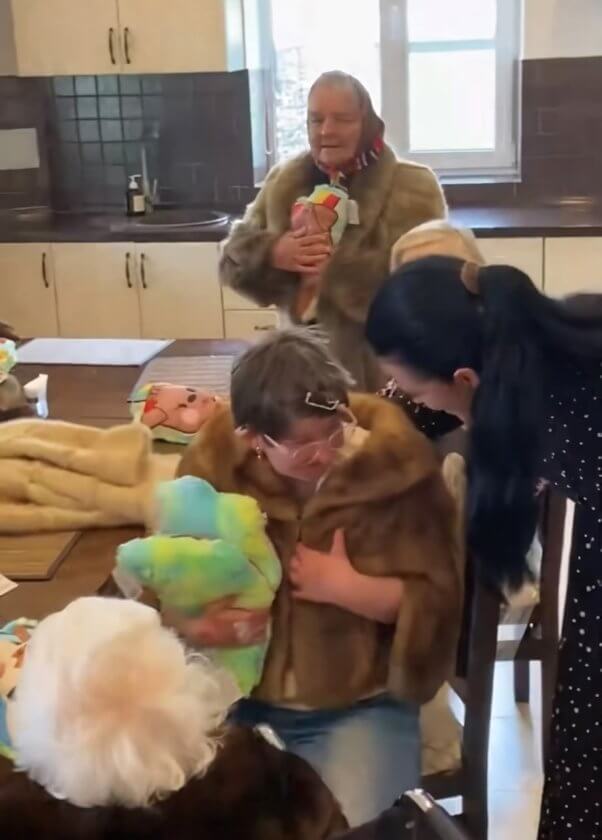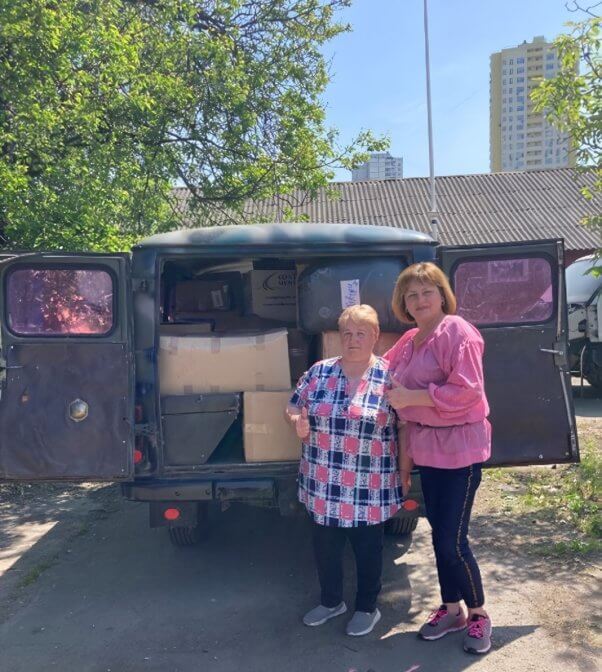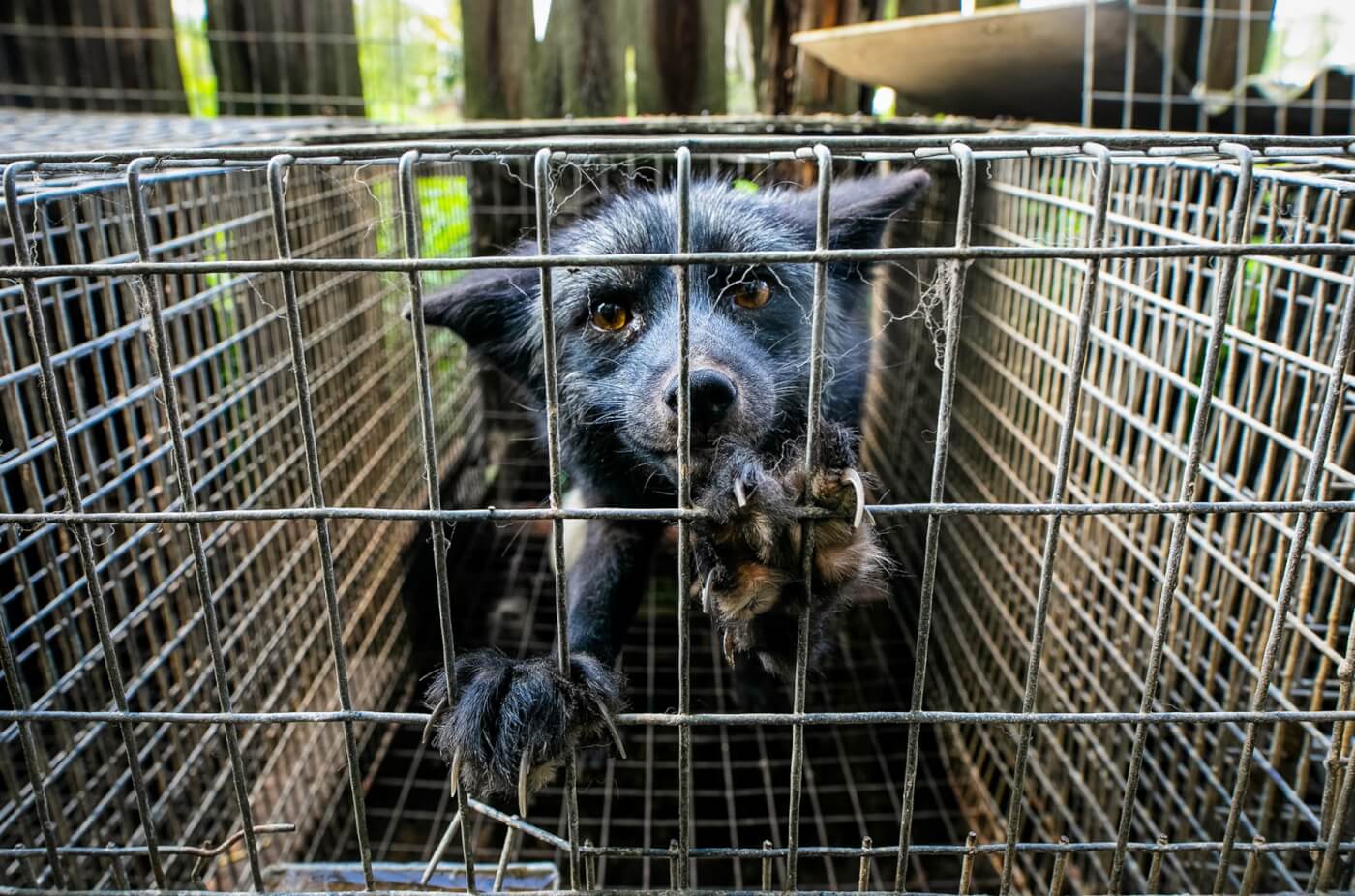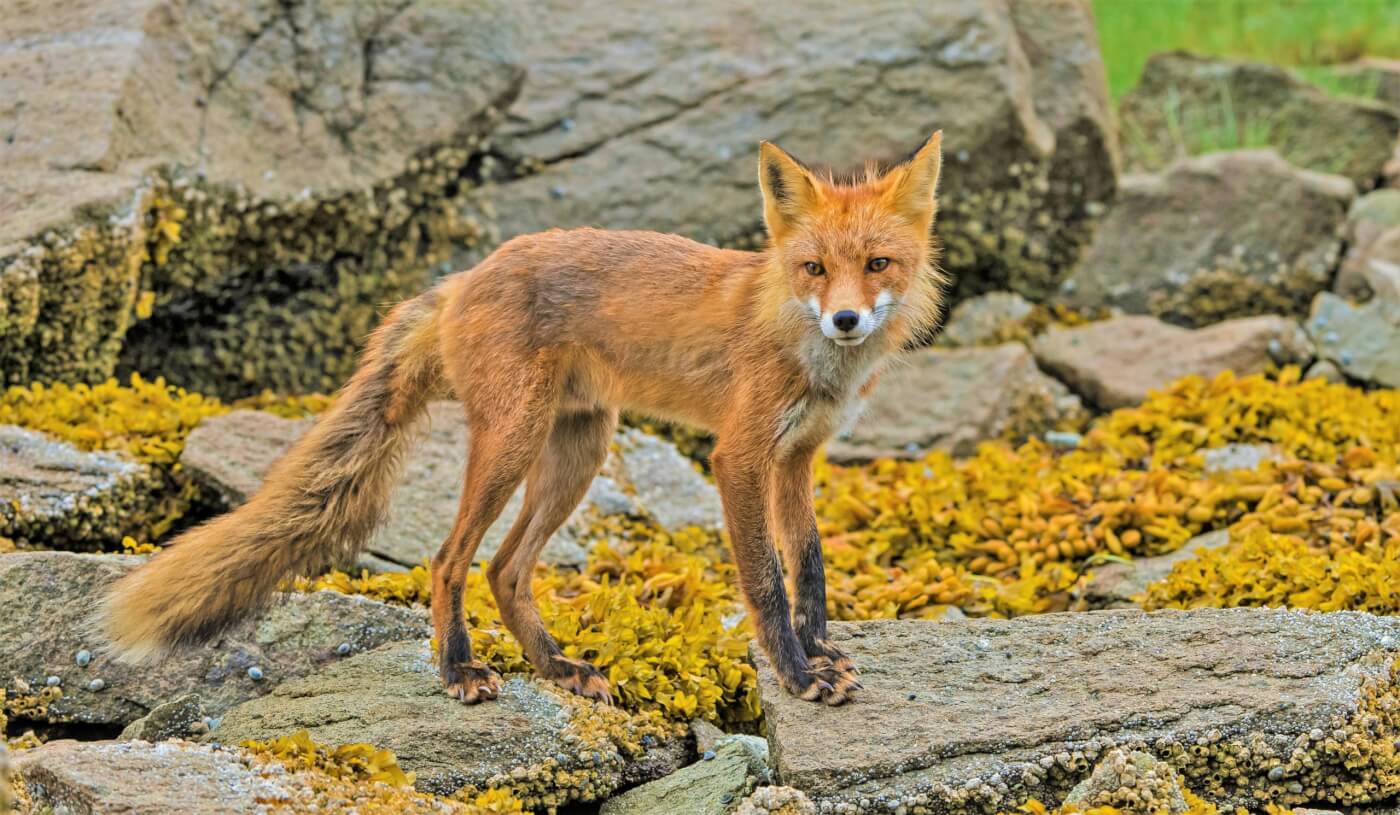Keeping War-Weary Ukrainians Warm During Winter: PETA Donates Fur Coats
Countless people in Ukraine continue to face life-threatening conflict while also battling the colder months. To support Life for Relief and Development’s (LIFE) aid efforts in the country, PETA is helping Ukrainians stay warm by donating nearly 1,000 fur coats and accessories. In addition to this fur coat distribution to Ukraine, we’re sending more than 200 coats to earthquake victims in Afghanistan. The people who originally gave us the coats made the kind choice to stop wearing fur in favor of vegan outerwear for which no animals had to suffer and die. We believe that the only humans with an excuse to wear animals’ fur are those who have no other way to endure the winter.
Who PETA Donated Fur Coats to in Ukraine
A portion of the coats and stoles were delivered in May to elderly women to help keep them warm this coming winter. For their safety, these individuals had recently been relocated to an old-age home in the province of Kiev Oblast from the territories currently enduring internal conflict in southern Ukraine.
LIFE coordinated the delivery of another portion of fur coats and hats—along with vitamins—to a group of widows who have volunteered to help the frontline defenders. The final allotment of donated items was delivered to a center helping internally displaced persons (IDP). The donation of furs will help Ukrainians better bear the frigid temperatures of winter.
According to recent statistics, refugees and asylum seekers totaled over 6.2 million (approximately 90% of whom are women and children) as of October 10, while around 6 million were internally displaced.
“Life for Relief and Development has been working to provide aid to Ukraine amid the ongoing conflict there. [LIFE] thanks everyone who contributed to PETA’s fur-donation program and made it possible to offer some relief to desperate Ukrainians preparing to endure the cold winter under extreme circumstances.”
—Nicole Hoisington, National/International Programs Coordinator, LIFE
Since the very beginning of the invasion of Ukraine, teams supported by PETA’s Global Compassion Fund have been helping animals put at risk by the chaos of war. Many of these sentient beings are starving, freezing, enduring floods, or suffering from ghastly injuries. As the latest crisis unfolds in Israel and Gaza, these teams are doing lifesaving work for animals there as well. (You can help teams prepare for the many challenges to come—and strengthen vital rescue work in Jordan, Romania, Ukraine, and other beleaguered parts of the world today—by making a special gift.)
After four earthquakes within just over a week, PETA donated more than 200 fur coats to be distributed to the victims in Afghanistan. Before the earthquakes hit, the country had already been hosting more than 3.2 million IDPs, along with over 52,000 refugees and approximately 13,500 Afghan refugee returnees. The earthquakes have worsened the plight of these already vulnerable communities, compounding the loss of lives, homes, and livelihoods.
Giving Coats to Folks in Ukraine and Others in Need Is Kind—the Fur Industry Is Not
PETA entities have worked with LIFE for over 15 years, ensuring that fur coat donations reach people in need in Afghanistan, Pakistan, Iraq, and Lebanon.
PETA also sends unwanted furs to homeless shelters and wildlife rehabilitation programs—to be used as bedding for orphaned animals—or uses them in informative displays.
Donating fur coats to those in need or using them to raise awareness is important and valid, but no one should be buying fur items or supporting the fur industry in any way. The vast majority of the world’s fur comes from farms where workers deprive animals of everything that’s natural and important to them, including being able to forage, swim, or climb. Fur farmers kill living, feeling animals after forcing them into tiny, filthy, and crowded cages. This extreme crowding causes some animals to self-mutilate and cannibalize their cagemates due to constant psychological and physical torment. Eventually, they’re electrocuted, bludgeoned, gassed, or even skinned alive.
Other animals killed for fur endure agonizing pain—often for days or weeks on end—when caught in horrifying traps. Some die from deep wounds or attacks from other animals before a trapper even arrives.
What You Can Do
Never buy fur. And if you have any furs in storage, please donate them to PETA’s fur program.

